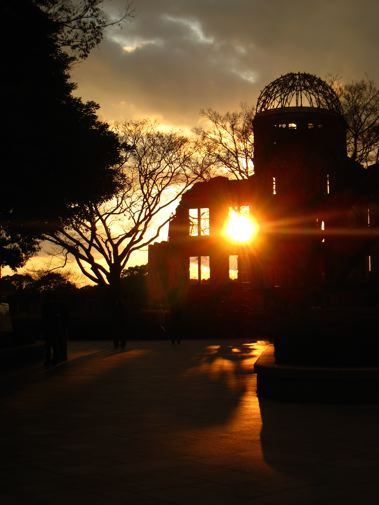Travel Tips
Finding Free and Cheap Travel Activities in Expensive Japan
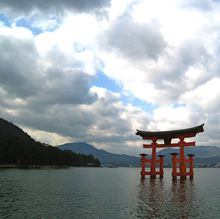 Japan is notable for its modern antiquity, bustling city life, and enough fluorescent lights to give any traveler’s eyes a workout.
Japan is notable for its modern antiquity, bustling city life, and enough fluorescent lights to give any traveler’s eyes a workout.
But with the current economic climate, the Land of the Rising Sun might also be confused with the Land of the Rising Budget, especially for travelers.
However, there are plenty of activities in Japan that are affordable—and even free—meaning you can cover a great deal of territory even on a tiny budget.
TOKYO
Each neighborhood in Tokyo has its own distinct appeal, plus dozens of free and cheap activities, so no one could ever dare complain that the city is boring. Tiring, yes—but never boring.
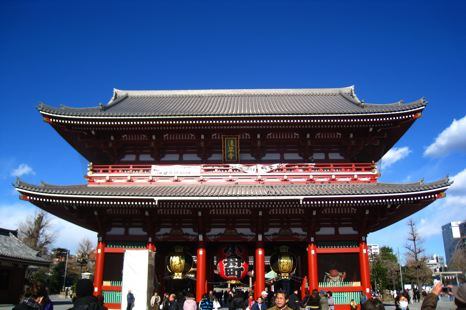 Though it’s incredibly touristy, stopping into a Japanese temple should still be at the top of your list of things to do. Senso-ji Temple, located in the Asakusa neighborhood, allows you to absorb Japanese culture while also experiencing the craziness of urban Tokyo life.
Though it’s incredibly touristy, stopping into a Japanese temple should still be at the top of your list of things to do. Senso-ji Temple, located in the Asakusa neighborhood, allows you to absorb Japanese culture while also experiencing the craziness of urban Tokyo life.
The main pathway leading up to the temple is lined with little shops that sell everything from rice cakes to key chains to samurai swords. The crowds can be a bit overwhelming, but if you just keep moving, you’ll be fine. It’s worth the effort to see the temple and the second tallest pagoda in Japan, which stands nearby. Best of all, both sites are free, which means you can save your money for more important things—like the sake set you’ve been eyeing since you entered the temple grounds.
Near Asakusa is Ueno Park, which is home to several temples, a museum and an art gallery. A stroll through this park provides a respite from the hustle and bustle of Tokyo, but still allows visitors to see some important sights. Cherry trees are abundant here, with blossoms reaching their peak in early April.
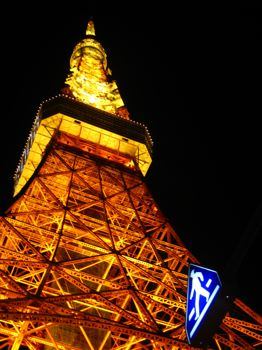 Although it’s definitely “on the brochure,” take some time to visit Tokyo Tower (modeled after the Eiffel Tower) just before dusk, where a ticket to the top earns you two spectacular views: the Tokyo skyline at sunset, followed by the city at night. On clear days, you can see the sunlight dancing upon Mount Fuji’s silhouette in the distance. www.tokyotower.co.jp/english
Although it’s definitely “on the brochure,” take some time to visit Tokyo Tower (modeled after the Eiffel Tower) just before dusk, where a ticket to the top earns you two spectacular views: the Tokyo skyline at sunset, followed by the city at night. On clear days, you can see the sunlight dancing upon Mount Fuji’s silhouette in the distance. www.tokyotower.co.jp/english
Your inner geek will emerge at Akihibara Electronic Town, a gadget-lovers paradise that’ll whet your appetite for anything with a “play” button. It might even make you rethink your budget, since prices here are pretty reasonable. In addition, many of the items at Akihibara won’t show up in the States for at least a year, thus giving you bragging rights to your friends back home. The area is also packed with toy stores that cater to the 7-year-old inside us all. www.akiba.or.jp/english
Seasoned travelers know about the Tsukiji Central Fish Market, and often make a point of dragging their friends at 5 a.m to this boisterous wholesale auction market where local merchants and restaurateurs compete to get the freshest and most desirable catch of the day. Yes, it can be a challenge to convince someone to get up that early to watch fish being sold, but it’s one of the better Tokyo experiences.
Don’t miss more tips with Cheapskate Confessions: Japan on a Budget
Fishmongers shout out prices and throw seafood around while visitors simply look on (and duck). Everything from giant tuna to baby octopus is available there—and don’t forget to enjoy some of the freshest sushi you will ever eat before heading back to your hotel for a mid-morning nap. Visitors are welcome, but remember to be respectful. The government only recently lifted a tourist ban, which was a result of some previously inconsiderate foreign visitors. www.tsukiji-market.or.jp/tukiji_e.htm
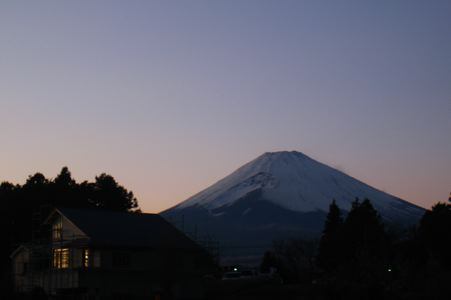 Depending on your time frame, consider a quick day trip to the small city of Gotemba. Located at the foot of Mount Fuji, Gotemba and the surrounding area can be reached by the Shinkansen high-speed train in about an hour and a half. Once you get off the train at Gotemba, hop on one of the buses that continually run up to any one of the volcano’s “fifth stations.”
Depending on your time frame, consider a quick day trip to the small city of Gotemba. Located at the foot of Mount Fuji, Gotemba and the surrounding area can be reached by the Shinkansen high-speed train in about an hour and a half. Once you get off the train at Gotemba, hop on one of the buses that continually run up to any one of the volcano’s “fifth stations.”
During climbing season (July–August) travelers can summit Mount Fuji via a number of different ascent routes on all sides of the volcano. The last stop accessible by road on these ascents is called the fifth station, which acts as a sort of base camp and is a great starting point for a mountain climb. While no climbing experience is needed to summi Mt. Fuji, you should be in good shape and definitely participate in a guided excursion. Most climbers begin their journey in the dead of night so that they are able to watch the sunrise at the summit. www.city.gotemba.shizuoka.jp/indexe.html
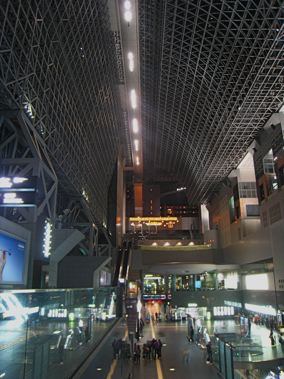 KYOTO
KYOTO
After the fast pace and sheer size of Tokyo, a few days in Kyoto might help you unwind and catch your breath. Don’t be misled, though—Kyoto is a vibrant city in its own right, but the focus remains on temples and shrines, most of which are free (leaving more money for sushi!).
Instead of heading straight to your lodging after arriving at Kyoto Station, put your luggage in storage and take some time to admire the station. In stark contrast with the more antiquated architecture of the rest of the city, Kyoto Station is a modernist attraction in and of itself.
You can walk along the glass corridor (located on the 11th floor), grab a bite to eat at Ramen Koji (seven Ramen restaurants located on the 10th floor), shop at Isetan Department Store, or simply wander around taking in impressive views of Kyoto Tower, located just across the street. www.kyoto-station-building.co.jp/index.htm (in Japanese)
Then walk on over to Kyoto Tower—the views are less dramatic than those of Tokyo Tower, but it’s an easy way to familiarize yourself with the city’s landscape.
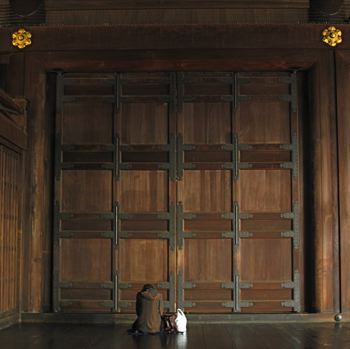 About 100 meters from the tower you’ll find Higashi Hongan-ji, one of Kyoto’s larger temples. After wandering the temple grounds, take your shoes off and explore the interior. Don’t miss the coil of rope made of human hair, once used to lift large beams for the construction of the temple. https://kyoto-tower.co.jp/kyototower/index.html (in Japanese)
About 100 meters from the tower you’ll find Higashi Hongan-ji, one of Kyoto’s larger temples. After wandering the temple grounds, take your shoes off and explore the interior. Don’t miss the coil of rope made of human hair, once used to lift large beams for the construction of the temple. https://kyoto-tower.co.jp/kyototower/index.html (in Japanese)
Less than 30 minutes from Kyoto and a must for anyone appreciative of Japanese culture is Fushimi Inari Taisha, or what one might call “Land of the Many Red Gates.”
Thousands of torii (shrine gates) line the pathways that lead up to various shrines within this breathtaking complex, and fox statues known as inari are ubiquitous throughout. (The fox is considered a messenger of the Shinto god, Inari.) It is about a 2.5-mile walk to the top, but only a half-day is needed here. The shrine might seem familiar to some as it inspired artists Christo and Jeanne-Claude’s “The Gates” exhibition in New York’s Central Park displayed in February 2005. https://inari.jp (in Japanese)
Kyoto’s subways and JapanRail lines are not as convenient as Tokyo’s for getting where you want to go. It’s easier to buy a one-day bus pass for Y500. In fact, as long as you use the bus more than three times in any given day, it will generally pay for itself. Traffic is not too bad either, and it beats walking some of the longer distances.
About three hours by Shinkansen from Kyoto is Hiroshima. It is an unmistakably small city, but the huge atrocities that occurred there—and the insights that they led to—make it an important stop on anyone’s itinerary.
Given the historical context of the city, the main focus lies on the Peace Memorial Park, which is home to the A-bomb Dome (another UNESCO World Heritage Site), the Peace Memorial Museum, and the Flame of Peace. The floodlights that surround the A-bomb Dome at night give a hauntingly beautiful quality to the skeleton of a building that serves as both a reminder of and a memorial to the effects of war. A nighttime walk through the park allows you to absorb the park’s beauty without the constant flash or click of tourists’ cameras.
Within the park is the Peace Bell, which visitors can ring if they so desire. There’s an image of an atom at the exact spot where the clapper hits the side of the bell, which symbolizes the repeated striking of an atom. The Flame of Peace (below, photo credit: Scott Frentrop) has been burning since 1964 and will continue to do so until all nuclear weapons around the world are destroyed.
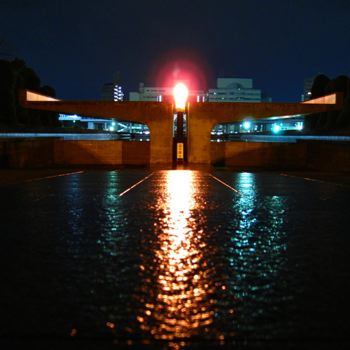 Lastly, there is the Peace Memorial Museum which documents the events leading up to, during, and after the bombing of Hiroshima. The park and everything included is open to the public for no charge, but the museum costs around Y50. www.pcf.city.hiroshima.jp
Lastly, there is the Peace Memorial Museum which documents the events leading up to, during, and after the bombing of Hiroshima. The park and everything included is open to the public for no charge, but the museum costs around Y50. www.pcf.city.hiroshima.jp
Outside of Hiroshima is Miyajima island, home to the Itsukushima Shrine, another UNESCO World Heritage Site. Visitors may recognize the famous torii (gate) which seems to float on top of the water on which this Shinto monument is built. On a clear day, the view of the gate is remarkable, but it is best to go when the tide is high to get the full floating effect.
The island can be reached via a ferry that is also considered part of the JR line. Be sure to spend time with the native deer, which enjoy the human interaction. Entrance to the shrine will cost you a few hundred yen, but you can still enjoy the floating torii without having to enter the actual temple. whc.unesco.org/en/list/776
For more ideas, don’t miss our complete Japan travel section.
FUKUOKA
In the south of Japan is Fukuoka, a large port city that also has many shrines as well as modern buildings. Like Tokyo and Kyoto, the city has its own tower, Fukuoka Tower. So if you’re attempting to hit several of Japan’s modern peaks while you’re visiting the country, this one standing at 758 feet should be on your list. www.fukuokatower.co.jp/english/index.html
Canal City is a huge shopping complex with an artificial canal that runs right through the middle of it. Stores within the complex cater to fine tastes as well as more pedestrian necessities. There are stores which will amuse both children and adults, including one devoted entirely to the Japanese superhero Ultraman. While the canal is a unique aspect of this shopping complex, it’s rather small and you won’t get a free ride. www.canalcity.co.jp/world/english/urban.html
At night, Fukuoka really comes to life, especially in the Tenjin and Nakasu areas where yatais (street food stalls) open and hordes of people head out to eat. For a fair price, you can dine on ramen, yakitori, and warm sake while making conversation with the cook or other locals.
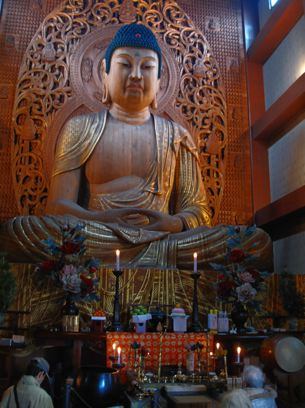 Like most other cities in Japan, there are several temples spread throughout Fukuoka. Given its proximity to Canal City and the Tenjin area, Tochoji Temple is worth a look.
Like most other cities in Japan, there are several temples spread throughout Fukuoka. Given its proximity to Canal City and the Tenjin area, Tochoji Temple is worth a look.
Inside you’ll find the country’s largest wooden Buddha (photo credit: Scott Frentrop), a monument whose massiveness seems to intensify when you actually see it. If you visit Tochoji during the calendar New Year, you can sound any number of temple bells and literally “ring in” the New Year.
GETTING THERE AND GETTING AROUND
The first and most important thing is the flight to Japan. If you’re coming from the States, the most affordable flights can often be found through Japanese travel agencies.
If you’re already in Asia, check out local travel agencies in whatever country you’re in. Avoid sites like Expedia or Travelocity as they may not be privy to the flight deals and bargains that Asian agencies often have, which may run a few hundred dollars cheaper.
If you’re aiming to cover a significant amount of ground within Japan and will primarily be traveling by train, purchasing a Japan Rail Pass (www.japanrailpass.net) will save you both time and money compared to the cost of buying individual point-to-point tickets. A single ticket to one city can often cost two-thirds of the price of an entire JR Pass. If this sounds like something you’d be interested in, make sure you buy one before you arrive in Japan, since JR passes are not available once you’re in the country.
LODGING
If you want to save money, staying in a hostel is the cheapest option. However, travelers looking for a little more comfort might want to consider a one-night stay in a typical Japanese guesthouse, or ryokan. In ryokan you get a small room with tatami-matted floors, a futon, kimonos, tea, and other amenities.
Due to the location and ambiance of ryokan, you’ll truly feel like you are part of Japanese culture. Prices are usually around $100 for one room, but a night’s accommodation can range from $40 for a modest ryokan to $250 for a more luxurious one. Unlike hostels, ryokan are much smaller and tend to book up quickly.
Text and Photos (except as indicated) by Karl I. Muller for PeterGreenberg.com.
For more on travel in the region, don’t miss:










